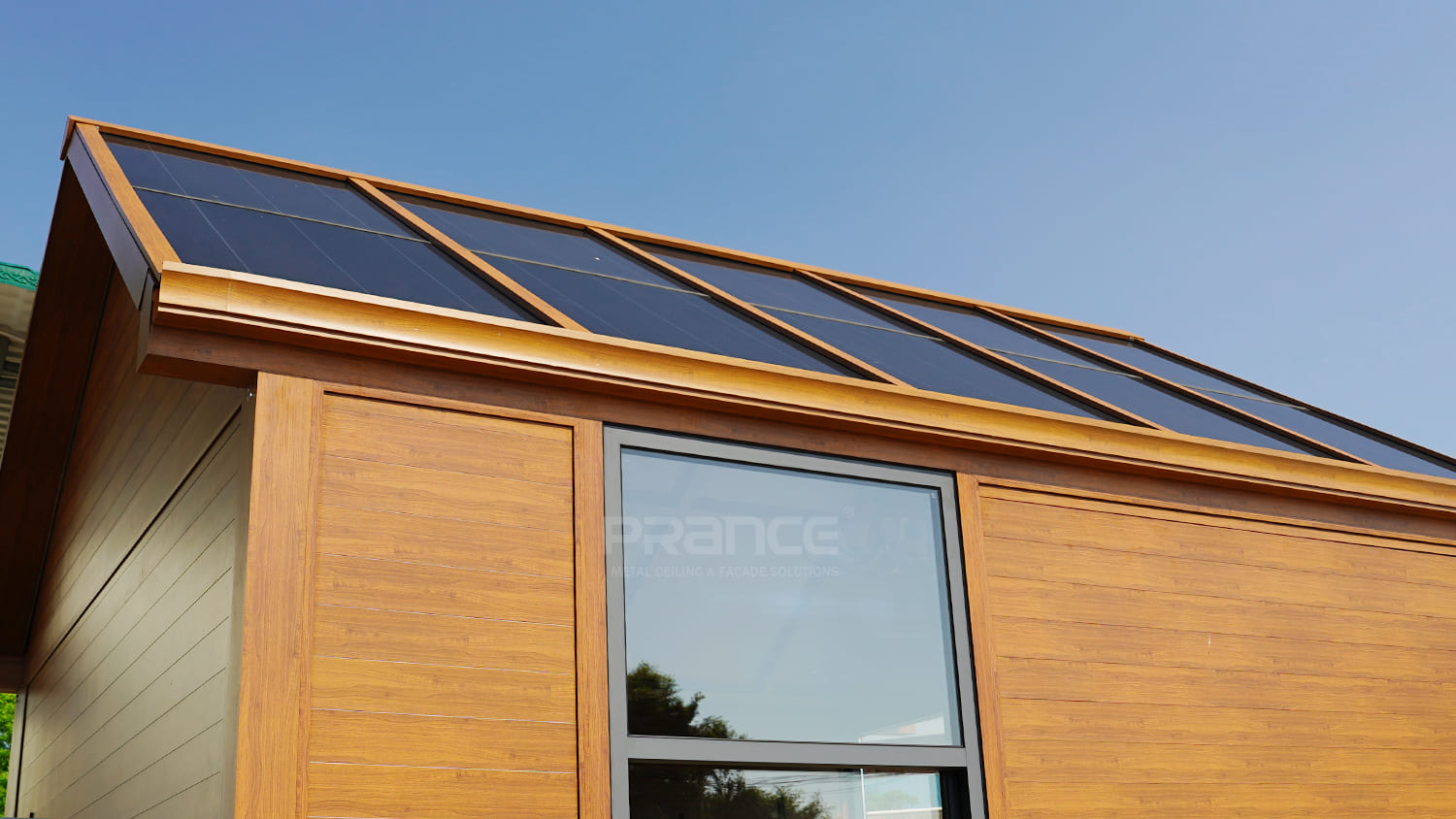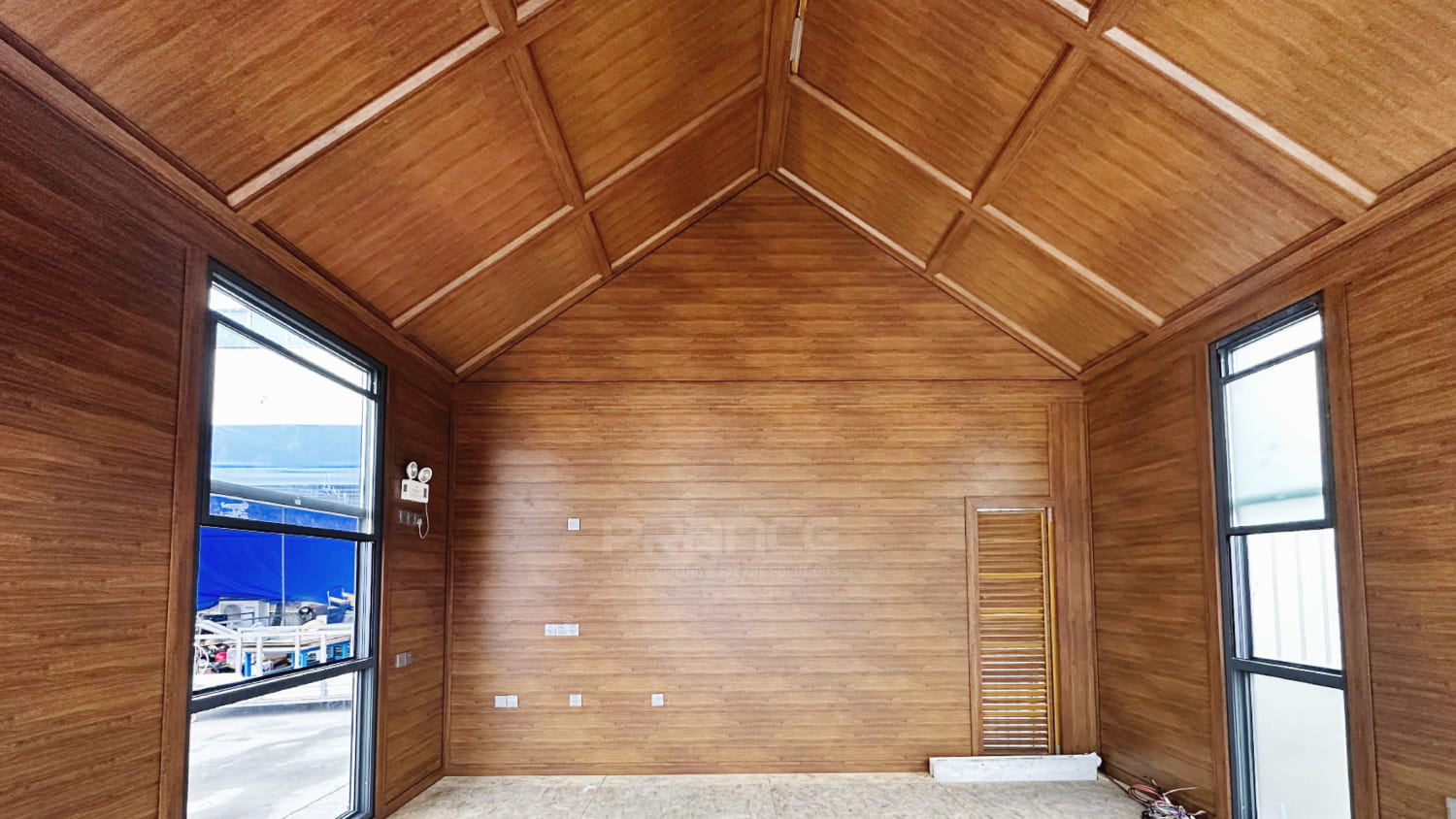PRANCE metalwork is a leading manufacturer of metal ceiling and facade systems.
How Much Are Prefab Homes Really? A Simple Cost Guide
Buying a home is a big step, and cost is usually the first thing people want to know. With more homeowners and developers turning to modular housing, many are asking: how much are prefab homes? The truth is, prefab homes can cost a lot less than traditional houses, but the total amount depends on several real, practical factors.
When people hear “prefab,” they sometimes think cheap or low-end. That’s not the case anymore. Prefab homes today are built with strong materials like aluminum and steel, include energy-saving features like solar glass, and are installed in just two days by four workers. They're faster to move into, easier to maintain, and often come ready with smart systems built right in. But understanding the full cost means looking at what goes into it—not just the sticker price.
This article will clearly explain the cost of prefab homes based on design, materials, features, installation, and more. Let's go over the actual figures and their significance for your budget.
The Base Structure and Factory Production

Base structure is the first significant expense of any prefab house. Usually constructed in a regulated factory environment, this covers the support frame, floor, roof, and walls. The materials utilised, the size of the house, and the architectural complexity all affect pricing for this component.
For instance, aluminium and steel prefab houses are more robust and weather-resistant than timber ones. Although metal may initially increase the price, it saves money over time by needing less upkeep. You won't have to worry about moisture damage or termites or need to repaint.
A simple 400–500 square foot prefab house shell would, on average, run between $20,000 to $40,000 depending on requirements. Just for the structure alone, more complicated designs or bigger units might into the $50,000–$80,000 level.
Usually included in this cost are precise cutting, fastening systems, insulation layers, and factory-produced moisture protection.
Installation and On-Site Assembly
Let us now consider installation. The quickness and simplicity of putting up prefab houses is one factor contributing to their growing appeal. Traditional houses require several subcontractors, foundation construction, and months of labour. A prefab house usually requires only four people and two days to get functioning.
When installation is included in, how much are prefab houses? Usually, the size and intricacy determine installation expenses, which can vary from $5,000 to $15,000. There can be extra local labour fees if the house has plumbing or electrical systems requiring on-site hookup.
The prices here, however, are far lower than those for typical constructions. You are also cutting delays brought on by weather or supply chain concerns, so helping to avoid budget overruns.
Solar Glass and Energy-Saving Features

Many prefab houses now have solar glass as a built-in or optional component. Not only for the environment but also for your budget, this is among the most intelligent improvements you can acquire. Solar glass helps to power components of your home like lighting and fans by converting sunshine into electricity even though it resembles ordinary glass.
Depending on how many windows and panels are utilised, adding solar glass could raise the cost of a prefab apartment by between $3,000 to $7,000. But, long-term energy savings make up for these initial expenses. Some households claim 20–40% monthly savings on their power expenses.
If you're curious about the price of prefab houses with energy-efficient characteristics, it helps to consider long-term expenses. Often, a somewhat higher beginning price results in significantly cheaper running costs.
Interior Finishes and Built-In Smart Systems
A prefab house's interior can be as basic or rich as you choose. Basic designs may have unfinished floors and walls, so you would have to finish the inside. Higher-end models feature completed bathrooms, kitchens, lights, and even smart systems such motorised curtains and automatic lighting.
The prices of interior finishing could differ greatly. While luxury finishes and technology connections could increase $30,000 or more, a basic finish could increase $10,000 to $20,000. That covers furniture as well as paint, lighting fixtures, cabinets, flooring, and sometimes even more.
Manufacturers such as PRANCE Metalwork Building Material Co. Ltd provide ready-to-use adjustable interiors. This spares you from working with more contractors later.
Transportation and Delivery Charges
Transportation is among the most neglected aspects of how much are prefab homes. Often, these houses arrive at your site in container shipments. Shipping expenses vary with factory-site distance.
Delivery might run you between $2,000 and $5,000 if you're close. Longer distances, inaccessible locations, or international shipment can increase the cost to $10,000 or more. Remember, though, these are usually one-time fees because prefab houses are meant to be moved with little chance of damage during transit.
PRANCE's modular homes are sized to suit conventional containers, hence their shipment is often more efficient than larger structures needing special shipping licenses.
Foundation and Site Prep
Your land has to be ready before your prefab house comes. This could involve linking utilities, installing a simple slab foundation, and levelling the land. Although not often included in the advertised price of a prefab house, it is nevertheless absolutely necessary for the whole expense.
Basic site preparation can cost between $5,000 and $10,000. Building in a rural or hilly area may increase prices based on grading, soil type, and local laws.
The benefit, however, is that your house being built in the factory allows for this work to be done concurrently. That overlap saves money and time as compared to conventional projects running under tight order.
Add-On Modules and Custom Features

Prefab is not set. Over time, you may select several designs, include rooms, or enlarge your area. Depending on size and features, every add-on module might run between $10,000 to $30,000.
These additions let your house expand with your needs whether it's an additional bedroom, a sunroom with solar glass, or a second-floor A-frame module. You may grow later without destroying everything; you don't have to begin large.
When considering how much prefab houses cost, don't limit your thinking to one unit. Consider future planning and adaptability.
Conclusion
So, how much are prefab houses really? The truthful response is that it relies on your decisions. Though with installation, solar glass, interior finishing, and delivery, a basic prefab unit might start at $30,000 but the total might vary from $50,000 to $120,000 for a high-end, ready-to-live-in home.
Even at the top end, prefab houses still cost significantly less than custom-built conventional residences. Moreover, they include quicker installation, less upkeep, and smart features included. From energy-saving solar glass to low-cost aluminium panels, these houses are built for actual life—not only short-term savings.
To explore flexible, well-designed modular housing with transparent pricing, visit PRANCE Metalwork Building Material Co. Ltd and get started on a prefab home that fits your style, needs, and budget.




















